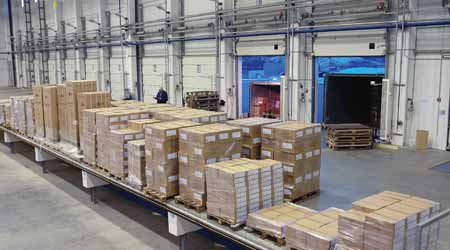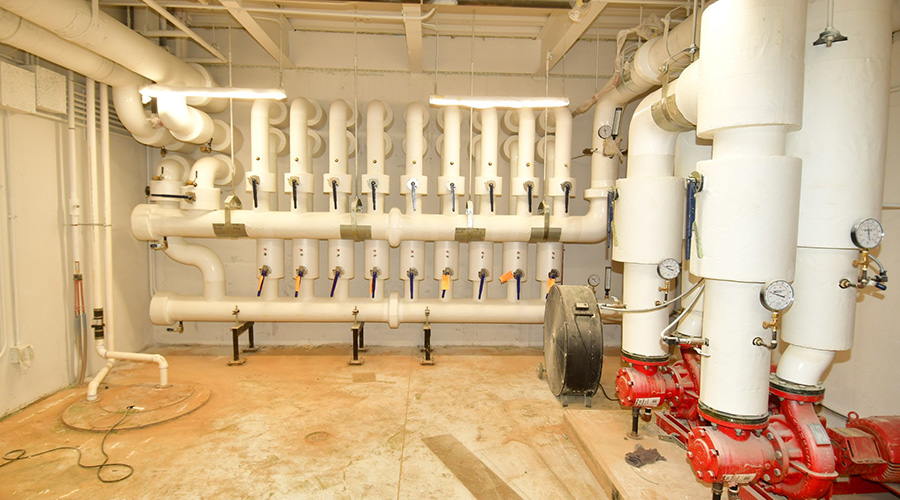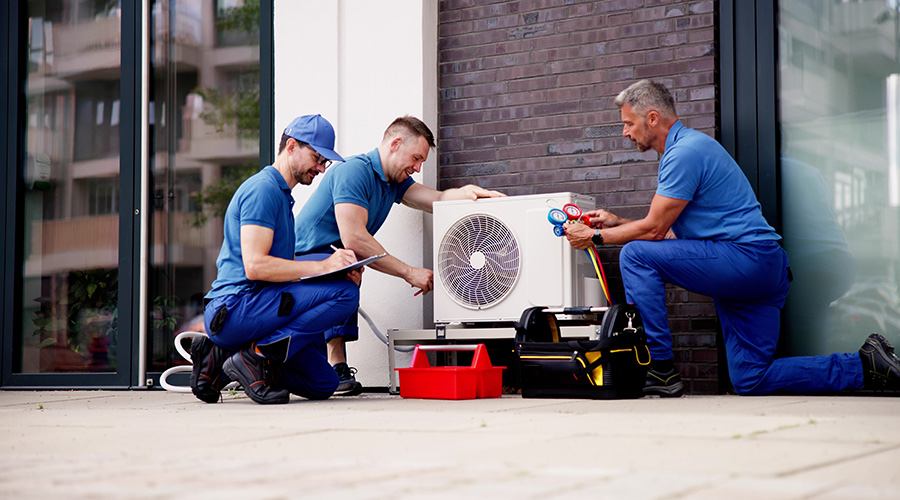 In warehouses that have large door openings, large quantities of conditioned air are lost to the outside every time the door is opened. Destratification fans can reduce the time required for the HVAC system to restore the space to the desired temperature.
In warehouses that have large door openings, large quantities of conditioned air are lost to the outside every time the door is opened. Destratification fans can reduce the time required for the HVAC system to restore the space to the desired temperature.High Ceilings? Large Door Openings? Fans May Improve Comfort, Save Energy
Heat rises. That simple law of physics causes problems in buildings. Destratification fans can help.
Fans can reduce thermal stratification in practically all facilities that have high ceilings. Properly designed systems can reduce the floor to ceiling temperature differential by more than 80 percent, providing both energy savings and improved comfort.
Fans for destratification are particularly effective in some special use applications. For example, the fans can help control condensation in areas with high humidity levels, such as swimming pools or gyms. Similarly, reducing thermal stratification can reduce fogging of windows during the cooling season and frosting of windows during the heating season.
Another special use application where fans can improve both comfort and energy efficiency is facilities like warehouses that have large door openings. Every time the door is opened, large quantities of conditioned air are lost to the outside. When the door is closed, it takes time for the HVAC system to restore the space to the desired temperature. Destratification fans can reduce the time required.
Fan limitations
Destratification fans cannot solve problems with buildings whose envelope is in poor condition, particularly when those poor conditions exist near the ceiling. High levels of heat loss near the ceiling set up thermally induced currents that result in the cooling of the air, causing it to fall. Destratification fans in this case would accelerate this cold air back towards the floor. The heat loss issues of the building envelope must be addressed first.
Similarly, buildings that have improperly sealed openings near the ceiling must have those issues corrected first. Openings, particularly when they are near the ceiling, result in air leaks from the building. This exfiltration is a particularly strong contributor to stratification. For example, if air is leaking out of the building at or near the high point of the conditioned space during the heating season, it creates a slight negative pressure. This negative pressure draws cold air into the space, usually at lower levels. This cold air lowers the temperature of the space at the level of the thermostat, so it calls for more heat. The heated air then rises in the space, leaks out, drawing in even more cold air.
Facility managers responsible for buildings with poorly designed or operating HVAC systems must address those system issues first before investing in destratification fans. Poorly operating systems may not be properly distributing the conditioned air throughout the space, resulting in some areas being warm while others are cold. This in turn contributes to stratification. Correct the HVAC issues first, then consider installing destratification fans.
Destratification fans should not be installed in unconditioned spaces. While it might seem beneficial to keep air moving in these spaces, destratification fans are not meant to serve as ventilation fans. Unconditioned spaces tend to be poorly insulated, if they are insulated at all. During the cooling season, the fans would simply move hot air from near the ceiling down to the floor. During the heating season, they would just increase the quantity of cold air reaching the floor.
Properly applied, destratification fans can improve comfort levels while reducing energy use. Typical energy savings from the use of the fans provide a simple payback of five years or less.
James Piper, PhD, PE, is a writer and consultant who has more than 35 years of experience in facilities management. He is a contributing editor for Building Operating Management.
Email comments and questions to edward.sullivan@tradepress.com.
Related Topics:













